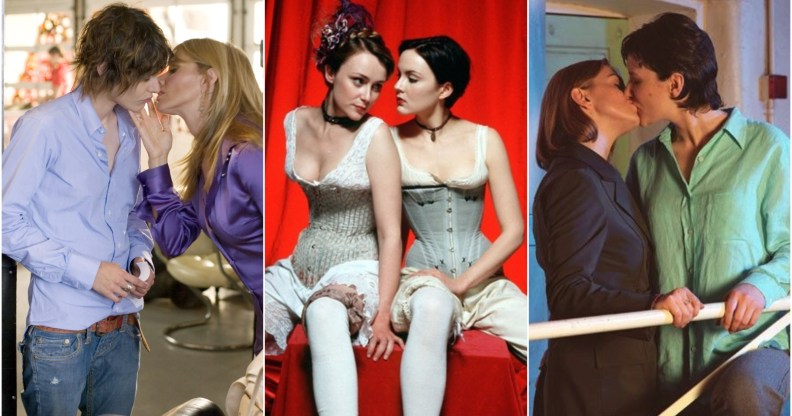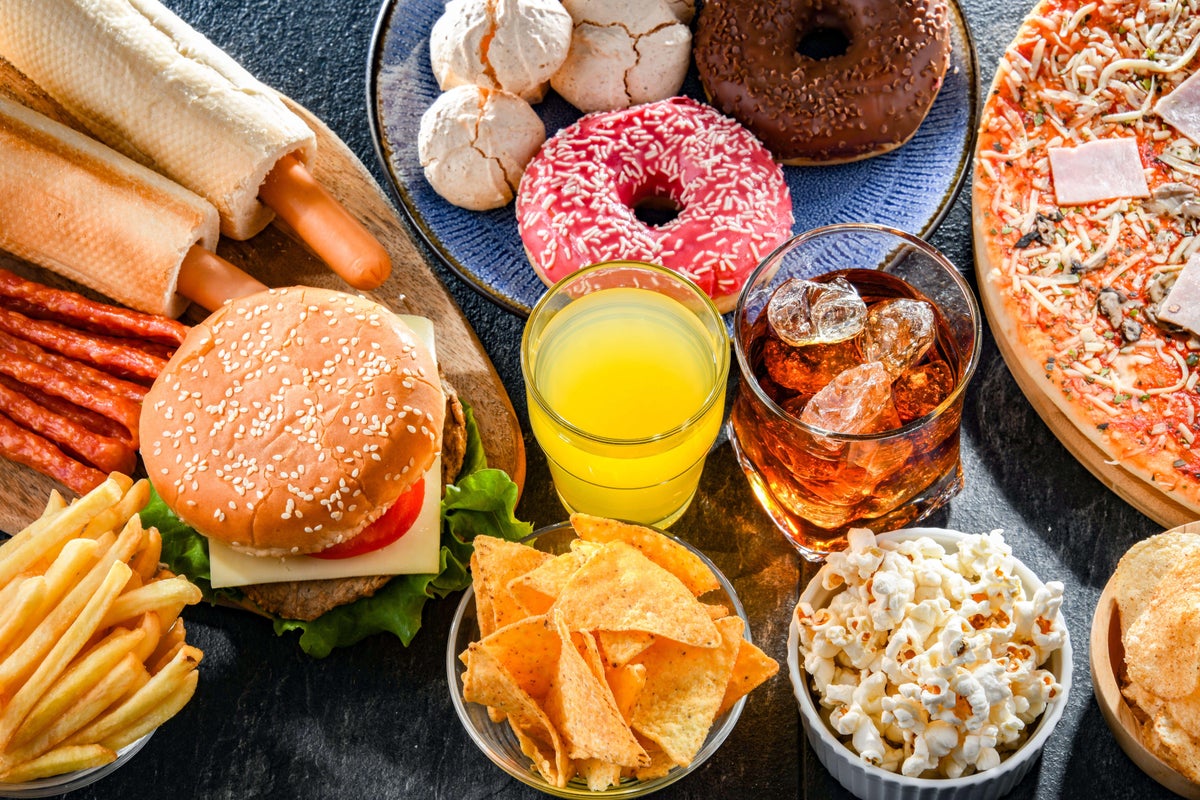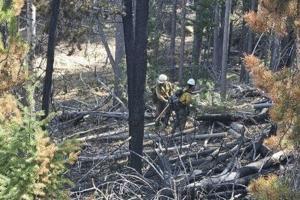This Lesbian Visibility Week, we’ve decided it’s high time that we give some much needed visibility to several absolutely iconic early ’00s sapphic TV shows that don’t get talked about nearly enough (in our opinion).Yes, you’ve probably heard of The L Word, who hasn’t – especially given the fact it was rebooted as The L Word Generation Q in 2019. But what about Tipping The Velvet? Or Fingersmith? Both of which are absolutely incredible historical sapphic bangers (in every sense of the word).
Teen drama Sugar Rush was fantastic too.Baby lesbians in the UK were also enthralled with an ITV show called Bad Girls, which, if you’ve never seen it, is one of the craziest, entertaining, moving and most sapphic drama series that has ever aired on that channel: which is saying a lot given that ITV are also responsible for camp classics like Footballer’s Wives.So, without further ado, here are the very best WLW-focused shows that aired between 2000-2005, which prove it really was the golden era of lesbian TV.

googletag.cmd.push(function() { googletag.
display('Mobile_Web_Pagicle_1'); }); Bad Girls (ITV)Simone Lahbib and Mandana Jones as Helen Stewart and Nikki Wade in Bad Girls (ITV)Before Orange Is the New Black was even a twinkle in Netflix’s eye, there was Bad Girls. This long-running, gritty, honest and incredibly popular ITV series was groundbreaking in many ways, but what really got sapphics talking was the intense and slow-burning romance that formed between the prison’s governor Helen Stewart (Simone Lahbib) and prisoner Nikki Wade (Mandana Jones) in the first three series, which aired between 1999 and 2001.Their smouldering relationship kicked up a notch when Helen resigned as governor and took a new job as a liaison officer working with prisoners sentenced to life imprisonment: like Nikki.
She encouraged Nikki to appeal against her sentence and things between them kept getting more and more heated, passionate...
and romantic. One of the reasons that the show was so critically acclaimed was the sheer amount of research that went into it. Bad Girls’ creators Ann McManus and Maureen Chadwick spent months visiting women’s prisons to speak to the inmates about their problems they faced; they were incredibly dedicated to telling these women’s stories.
googletag.cmd.push(function() { googletag.
display('Mobile_Web_Pagicle_2'); }); Tipping The Velvet (BBC)“Oh Kitty, may I really...
touch you?” = the biggest lesbian catchphrase of 2002 (BBC)To say lesbians were thoroughly gagged by 2002 period drama Tipping The Velvet is a bit of an understatement. The three-part BBC series, based on a best-selling book by Sarah Waters, was unashamedly forthright and didn’t shy away from broadcasting incredibly full-on sapphic sex scenes, which was very unusual at the time.The first part focuses on Nan (Rachael Stirling) falling in love with beautiful, confident music hall performer/male impersonator Kitty, played by Keeley Hawes.
Nan moves to London to continue her “friendship” with Kitty, and, oh, who would have thought it: the apartment they rent only has one bed, so they have to share.As well as featuring blisteringly explicit sex scenes between Nan and Kitty, the programme also aired a frankly jaw-dropping scene featuring Nan wearing a gold strap-on dildo that honestly has to be seen to be believed. googletag.
cmd.push(function() { googletag.display('Mobile_Web_Pagicle_3'); }); Fingersmith (BBC)The twists! The turns!! The twists AND turns!!! Fingersmith was so good (BBC)*Fererro Rocher advert voice* Sarah Waters, with these lesbian period dramas you’re really spoiling us.
After the success of the unashamedly raunchy Tipping The Velvet, the BBC decided to adapt another of Waters’ historical novels: Fingersmith, which aired in 2005. Like Tipping The Velvet, it was set in Victorian England, but it focuses more on crime rather than music halls and gold dildos. The central character is a thief named Sue (Sally Hawkins) who is recruited by a rogue of a man called Richard Rivers to run a scam on a woman called Maud, played by Elaine Cassidy, but Sue and Maud fall in love.
Maud (Elaine Cassidy) lives with her uncle (Charles Dance) in a rambling country estate, but all is not as it seems. The twist at the end of this series is so good that, even 20 years on, spoiling it would be a crime in itself. It makes your head spin when you find out just what, in fact, has been going on there behind closed doors.
googletag.cmd.push(function() { googletag.
display('Mobile_Web_Pagicle_4'); }); Sugar Rush (Channel 4)Sugar Rush might only have run for two series, but it made a lasting impact (Channel 4/ Shine TV)The first series of teen comedy drama Sugar Rush aired in 2005, and followed the trials and tribulations of lesbian teenager Kim (Olivia Hallinan) as she navigates, firstly, a move to Brighton with her family, and then an unrequited crush on her best friend, Sugar: who is – tragically – straight. We’ve all been there. In the second series of the TV show, Kim finally accepts that Sugar is actually a pretty toxic friend, and gets together with a lesbian sex-shop owner and part-time club DJ called Saint, which, if you’re familiar with Brighton, is still a fairly standard pair of jobs around there twenty years on.
Sugar Rush‘s depictions of teen sexuality were ahead of their time, which is probably why it kept getting pushed back later and later in the schedule by Channel 4, before being fairly unceremoniously axed.It’s worth pointing out that the author of the original book Sugar Rush, which the show is based on, is Julie Burchill: now a prominent gender-critical figure. We didn’t want to leave the series off the list, because it really was a major step forward for lesbian representation – but we also didn’t want to gloss over that fact.
googletag.cmd.push(function() { googletag.
display('Mobile_Web_Pagicle_5'); }); The L Word (Showtime)The original cast of The L Word. They usually had more clothes on than this, but not always (Showtime)We couldn’t write an article about groundbreaking early ’00s lesbian TV shows without including arguably the biggest and most significant of them all: The L Word, which featured television’s first-ever ensemble cast of lesbian and bisexual female characters, all of them impossibly well-groomed and surprisingly well-off, even though none of them ever seemed to do much work: they just hung out at a queer café all the time.The representation in The L Word was far from perfect, particularly the poor portrayal of the sole trans character, Max (Daniel Sea) who is regularly ridiculed by his so-called friends.
The character of Max was brought back in the reboot, The L Word: Generation Q, and he was finally shown happy and thriving, which was nice, but belated.However, it’s hard to write The L Word off completely for being too white, too cis and too privileged: it was a huge deal to see a group of women on screen whose lives didn’t revolve around men. Instead, they spent their time having parties, fingering each other on balconies and generally making us all want to move to a version of West Hollywood where apparently you can rent a fancy house with a pool on a hairdresser’s salary.
The post These five iconic sapphic shows officially prove lesbian TV peaked in the early ’00s appeared first on PinkNews | Latest lesbian, gay, bi and trans news | LGBTQ+ news..
Health

These five iconic sapphic shows officially prove lesbian TV peaked in the early ’00s

This Lesbian Visibility Week, we’ve decided it’s high time that we give some much needed visibility to several absolutely iconic early ’00s sapphic TV shows that don’t get talked about nearly enough (in our opinion). Yes, you’ve probably heard of The L Word, who hasn’t – especially given the fact it was rebooted as The [...]The post These five iconic sapphic shows officially prove lesbian TV peaked in the early ’00s appeared first on PinkNews | Latest lesbian, gay, bi and trans news | LGBTQ+ news.















